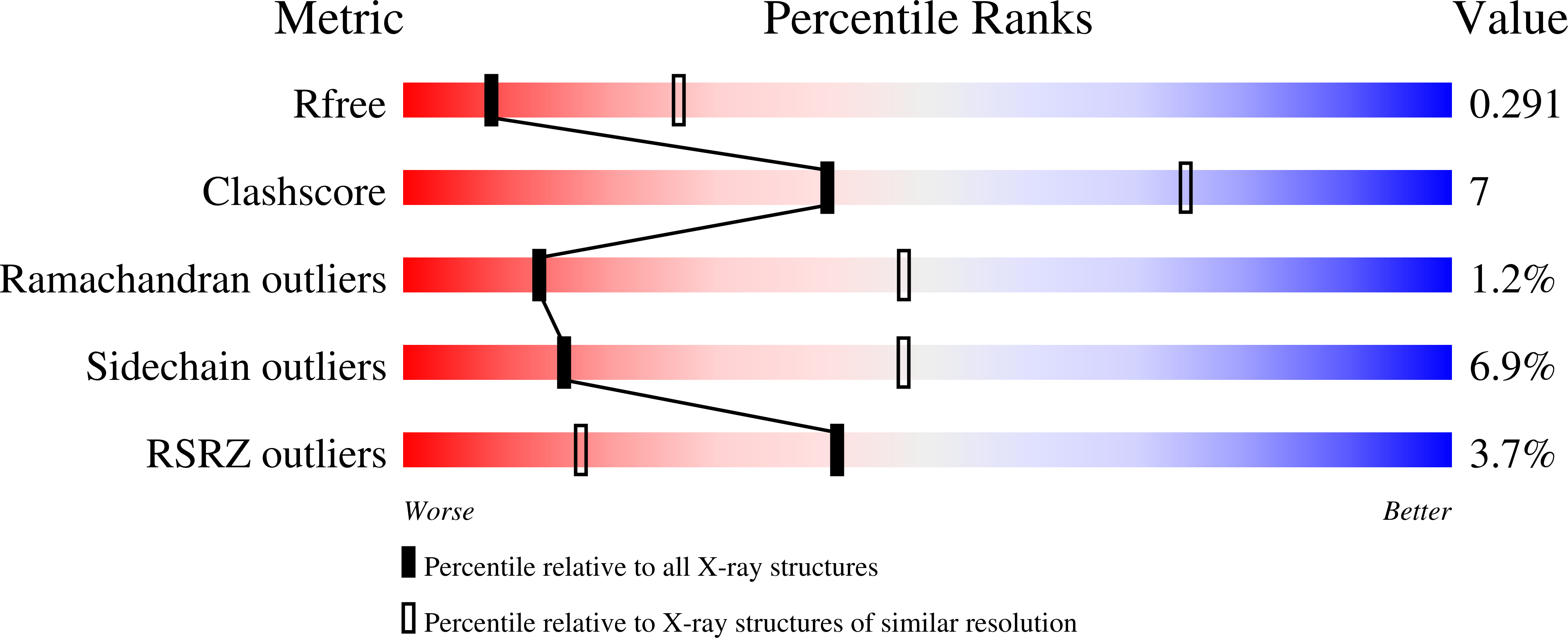Emergence of immune escape at dominant SARS-CoV-2 killer T cell epitope.
Dolton, G., Rius, C., Hasan, M.S., Wall, A., Szomolay, B., Behiry, E., Whalley, T., Southgate, J., Fuller, A., Morin, T., Topley, K., Tan, L.R., Goulder, P.J.R., Spiller, O.B., Rizkallah, P.J., Jones, L.C., Connor, T.R., Sewell, A.K.(2022) Cell 185: 2936
- PubMed: 35931021
- DOI: https://doi.org/10.1016/j.cell.2022.07.002
- Primary Citation of Related Structures:
7P3D, 7P3E, 7PBE - PubMed Abstract:
We studied the prevalent cytotoxic CD8 T cell response mounted against severe acute respiratory syndrome coronavirus 2 (SARS-CoV-2) Spike glycoprotein 269-277 epitope (sequence YLQPRTFLL) via the most frequent human leukocyte antigen (HLA) class I worldwide, HLA A ∗ 02. The Spike P272L mutation that has arisen in at least 112 different SARS-CoV-2 lineages to date, including in lineages classified as "variants of concern," was not recognized by the large CD8 T cell response seen across cohorts of HLA A ∗ 02 + convalescent patients and individuals vaccinated against SARS-CoV-2, despite these responses comprising of over 175 different individual T cell receptors. Viral escape at prevalent T cell epitopes restricted by high frequency HLAs may be particularly problematic when vaccine immunity is focused on a single protein such as SARS-CoV-2 Spike, providing a strong argument for inclusion of multiple viral proteins in next generation vaccines and highlighting the need for monitoring T cell escape in new SARS-CoV-2 variants.
Organizational Affiliation:
Division of Infection and Immunity, Cardiff University School of Medicine, CF14 4XN Cardiff, Wales, UK.




















